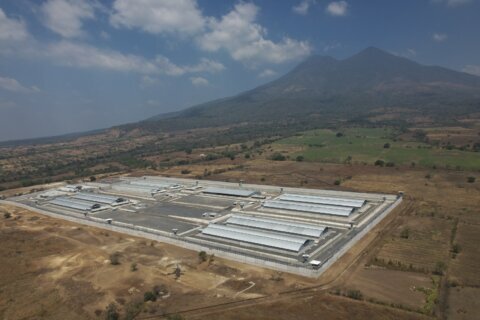The bigger you are, the easier it gets.
This is the main idea behind “economies of scale,” an economic concept that describes how larger companies become more efficient and protect their market position. For investors looking to hold for the long-term and play it safe, understanding how economies of scale work can allow them to find valuable companies with consistent, predictable financials and economic moats preventing future competition.
Historically, regulated utilities and auto manufacturers have enjoyed substantial and stable economies of scale. Today, software companies and data centers employ the same principles, investing large amounts in research and development but “making” the actual good at a near-zero cost.
Here’s a brief explainer on economies of scale, along with a dive into those three industries where the phenomenon is particularly relevant:
— What are economies of scale?
— Investing in regulated utilities.
— Investing in auto manufacturers.
— Investing in software companies and data centers.
[Sign up for stock news with our Invested newsletter.]
What Are Economies of Scale?
Simply put, economies of scale occur when a firm’s average total cost to produce a good or service decreases as they increase their quantity of output. When employed to a great degree, economies of scale create cost advantages for large producers and insulate them from new competition — a lucrative proposition for a firm (and its shareholders).
“For any firm, their total cost — or expenses — can be divided into two categories: fixed and variable,” says Chris Handy, a teaching assistant professor of economics at the University of North Carolina–Chapel Hill. All firms incur fixed costs just to begin operations, such as buying machinery, building out a factory or designing the product, Handy says. In contrast, variable costs relate directly to the actual good or service produced, such as the raw materials or labor, and increase proportionally with each additional unit produced.
In the early stages of a firm’s growth, the average total cost to produce a good or service decreases because the firm spreads their initial fixed cost over more units of output, Handy explains. But as the firm grows larger, various coordination issues arise, such as managing different divisions or communicating between teams, which can cause a large firm to be less efficient.
As a result, a firm’s marginal cost — or the combined fixed and variable cost of producing one additional unit — can sometimes increase as the firm grows larger, even as their output increases.
While all firms benefit from spreading fixed costs over more units and will experience economies of scale at some point in their life cycle, many operate in industries where marginal cost cannot be substantially reduced as output increases, especially service-dominated industries such as hotels, restaurants or tourist attractions.
These types of industries cannot fully benefit from economies of scale, because even at substantial size, high variable costs prevent these firms from reducing their average total cost per unit, even as output increases, Handy says.
Thus, industries that operate with high fixed costs and enjoy low marginal costs benefit the most from economies of scale, creating large barriers to entry for potential competitors, insulating themselves from competition and padding their margins.
Regulated Utilities
Regulated utilities are the textbook example of economies of scale, Handy says. Providing a utility requires the development of massive infrastructure — building out the plant, laying the distribution network and reaching every customer — making fixed costs for these projects incredibly high.
Once established, though, the cost of the actual natural resources to create the utility is comparably low. As a result, many utilities experience economies of scale large enough to constitute a natural monopoly, as many Americans have just one electricity, water or gas provider in their area.
In much of the U.S., utilities are still a privately provided service and state or local government allows the monopoly to exist but regulates prices and practices to put a damper on aggressive behavior.
“The basic idea is to recognize that four different competitors building out an electric grid is not efficient, but let’s not allow them to charge as high a price as a profit-maximizing monopolist would like to,” Handy says.
For investors, this means that utility companies are largely insulated from competition, receive predictable cash flows and are able to pay consistent dividends. “As long as these firms manage their cost side, they will do fine,” says Derek Horstmeyer, a professor of finance at George Mason University in Fairfax, Virginia. This makes strong and stable management teams especially important for these firms.
Who benefits from investing in regulated utilities? “Somebody near retirement, who is a little more risk-averse, because the stable dividends and regulation allow utilities to act like a safe stock,” Horstmeyer says. Even in difficult economic times, everyone needs power and water, making utilities practically recession-proof and a defensive play for a portfolio.
Duke Energy Corp. (ticker: DUK), which provides power to 7.2 million Americans, is a traditional utility stock that has paid a quarterly dividend for 95 straight years, and this past year marked the 15th consecutive year of dividend increases.
Another of the biggest names in U.S. utilities stocks is Southern Co. ( SO), an Atlanta-based company that operates a wide variety of power plants and uses nuclear, wind, solar, hydroelectric and traditional fossil fuels. Last year, the company raked in $3.15 billion in net income, and the stock carries a 4.1% dividend yield.
[See: 8 Dependable Cash Cow Stocks to Buy.]
Auto Manufacturing
Developing a new vehicle is a massive undertaking — just take a look at Tesla Inc.’s ( TSLA) long journey to efficient production. Founded in 2003, it turned its first yearly profit in 2020.
Modern cars contain massive amounts of technology, including software, computers and sensors, while still requiring all the same raw materials as your father’s Toyota. The development of each specialized component requires extensive research and design, and putting all the pieces together requires a massive amount of coordination, from laying out the factory and bringing in specialized machinery to organizing the assembly process.
Thus, the auto manufacturing industry has huge fixed costs, but the “marginal costs — labor, metal and materials — though not trivial, are comparatively low relative to these startup costs,” Handy says.
In economic terms, the auto industry functions as an oligopoly, Handy says. Consumers have a number of options to choose from, and many brands compete for market share. However, several of these brands operate under the same umbrella.
Toyota Motor Corp. ( TM) makes Toyota, Lexus and Scion vehicles and has minority stakes in Suburu and Suzuki. General Motors Co. ( GM) manufactures the Buick, Cadillac, Chevrolet and GMC brands, while Volkswagen (VWAGY) makes Audi, Bentley, Bugatti, Lamborghini, Porsche and Volkswagen.
The presence of large, established companies combined with high startup costs creates a significant barrier to entry. Elon Musk and Tesla first teased the Model 3 as affordable for the average consumer in 2006, but it took until mid-2017 for the company to begin even limited production, finishing the year with a mere 1,667 vehicles sold.
Today, Tesla has the largest market capitalization of any auto manufacturer in the world, yet its vehicle sales still lag behind those of legacy automakers. In 2020, Tesla sold 217,600 vehicles, while GM, Toyota, and Ford ( F) all sold more than 2 million each.
But the auto industry is undergoing a massive transition, and in 20 years, it’s possible that almost all new car sales will be electric vehicles. Traditionally, economies of scale would provide a good defense against Tesla and other startups, but the big thing now is battery technology, Horstmeyer says, and it’s unclear which firms will take the lead.
One auto stock to watch is Stellantis NV ( STLA), which formed Jan. 16, 2021, following the merger of French automaker PSA Group and Italian automaker Fiat Chrysler. Brands under their umbrella now include Chrysler, Dodge, Fiat, Jeep, Maserati and Ram.
Mergers enhance economies of scale, and Stellantis would have been the fourth-largest global automaker in 2020. Morningstar analysts are bullish on the stock, giving it a fair-value estimate of $33. The stock traded for less than $21 as of early August 2021.
Software Companies and Data Centers
Big software companies also experience economies of scale, though not through the same methods as utilities and auto manufacturers.
Microsoft Corp. ( MSFT), for instance, hires a bunch of developers, engineers and managers to produce a product like Microsoft Office, but providing the billionth user with a copy is essentially free for Microsoft. All the work — and the fixed costs — are tied up in developing the software itself.
The software industry has high gross margins because after development, the companies’ biggest expense is persuading people to purchase their product, Horstmeyer says. Once again, these marketing costs remain comparatively low relative to research and design, allowing these firms to benefit from substantial economies of scale as they grow.
Data centers have also emerged as a sector with important economies of scale. Amazon Web Services, Amazon.com Inc.’s ( AMZN) division that offers cloud-based solutions for businesses and consumers, incurred huge fixed costs building out their data centers, but now the cost of running the center is comparatively low: a few employees and a lot of electricity.
In 2020, AWS booked more than $13.5 billion in operating profit, which represented more than 63% of Amazon’s total operating profit, making AWS by far its most profitable division. In fact, cloud computing and big data are so profitable that traditional real estate plays, such as real estate investment trusts, or REITs, have started investing in properties that house data centers, Horstmeyer says.
Looking to the future, data centers could become a sort of privately held but publicly regulated utility, due to their high fixed costs, large barriers to entry and the essential services they provide to Americans. “If hacking between countries grows even worse, these data centers could become highly regulated for national security reasons, giving them similar properties to utility providers,” Horstmeyer says.
If you are looking for economies of scale to drive future growth in your portfolio as opposed to consistent value, software companies and data centers could be a good addition.
In this space, it’s hard to go wrong with the FAANG stocks — Facebook Inc. ( FB), Amazon, Apple Inc. ( AAPL), Netflix Inc. ( NFLX), and Alphabet Inc. ( GOOGL) — but beyond the basics, look toward data center REITs, such as Equinix ( EQIX) and Digital Realty ( DLR), which dominate the sector.
[See: Best REITs to Buy for a Recession.]
Takeaway
In today’s technology- and innovation-driven world, it seems that every day a new startup company emerges, bucking industry trends and eroding the market share of established competitors.
For an investor, these changes can be hard to predict, and understanding how economies of scale protect market position and pad margins can allow investors to find consistent and valuable companies in a turbulent, growth-oriented marketplace.
Regulated utilities offer bond-like properties, while auto manufacturers continue to remain insulated from mass competition. For those looking to straddle the line between growth and value, look toward software companies and data centers that invest heavily in their fixed costs to eventually reap benefits from economies of scale.
More from U.S. News
Top 7 Autonomous Vehicle Stocks to Buy Now
7 Top Enterprise Software Stocks to Buy
Economies of Scale: 3 Industries That Benefit the Most originally appeared on usnews.com









